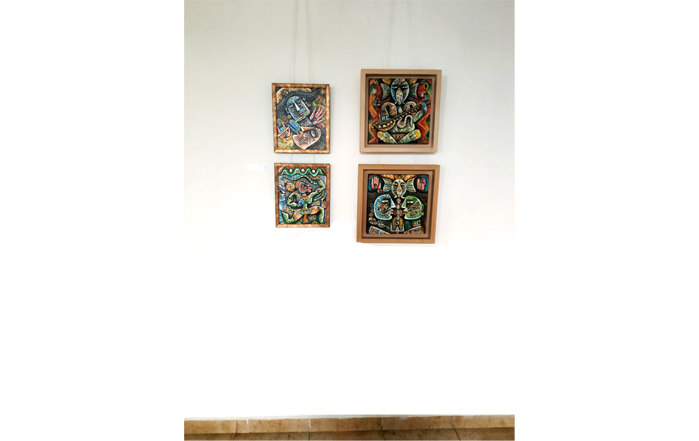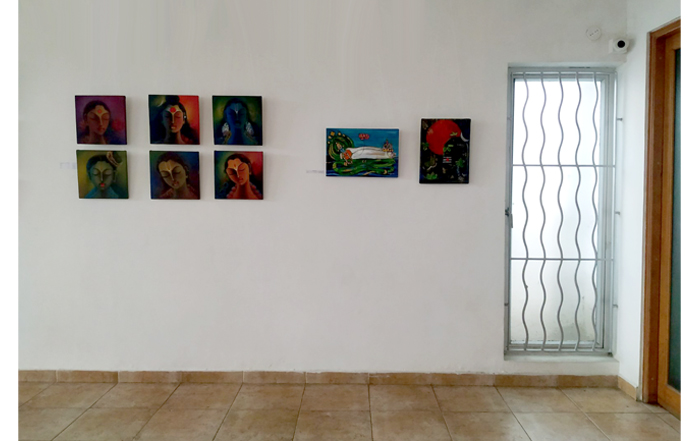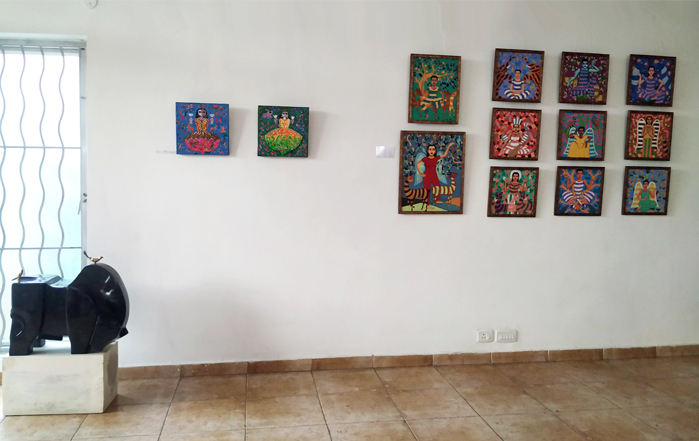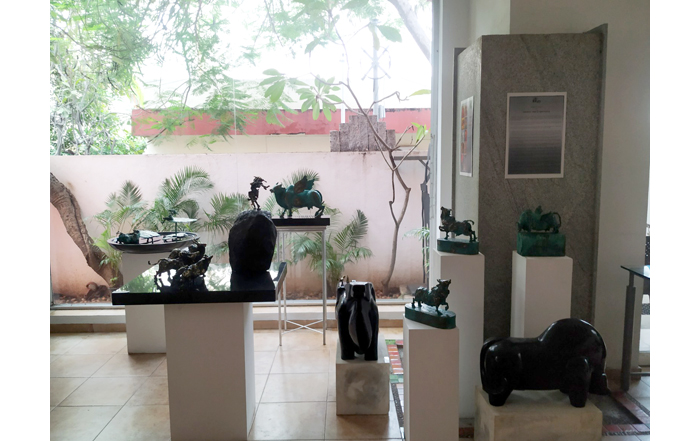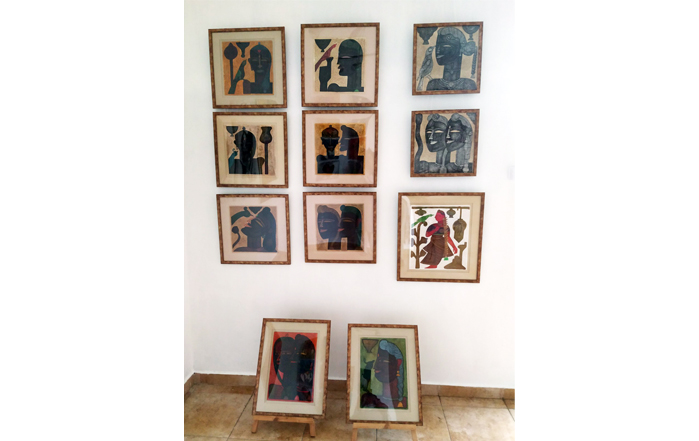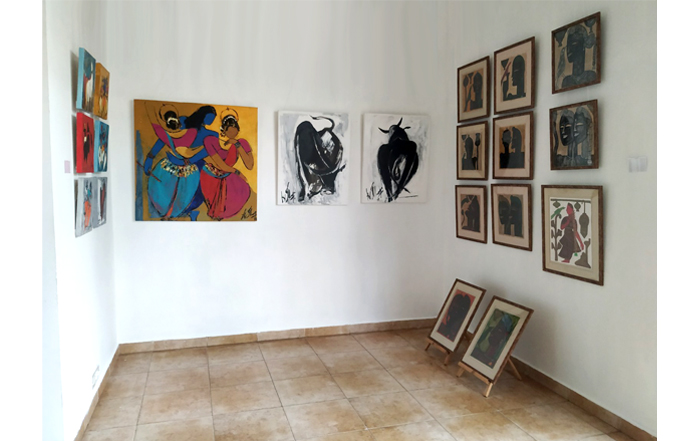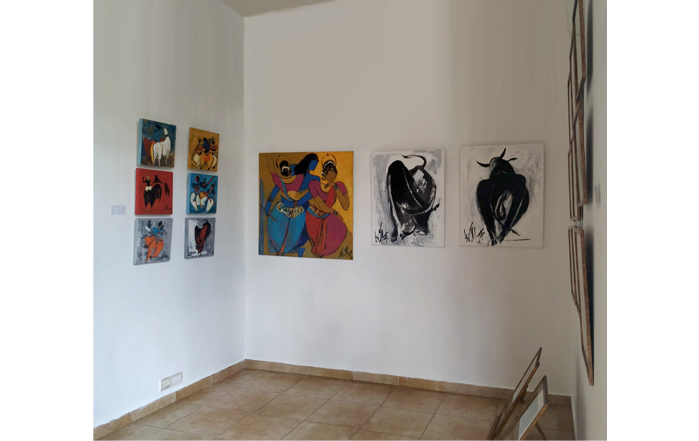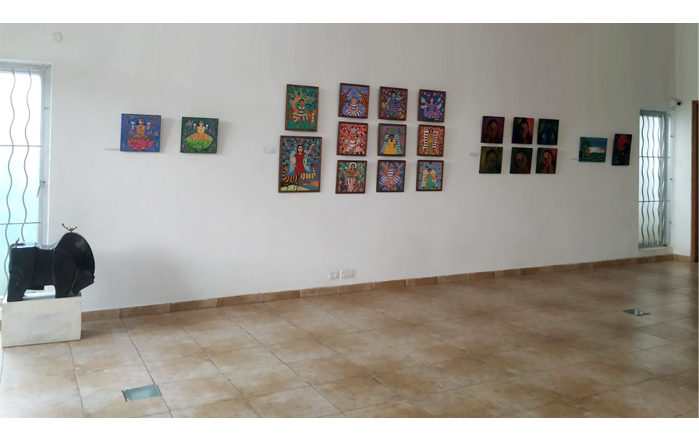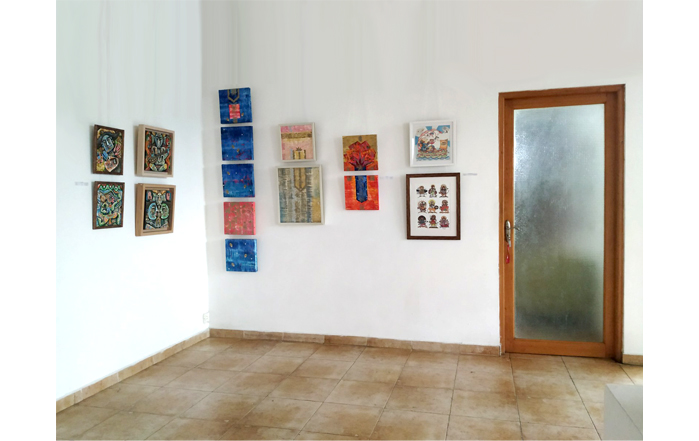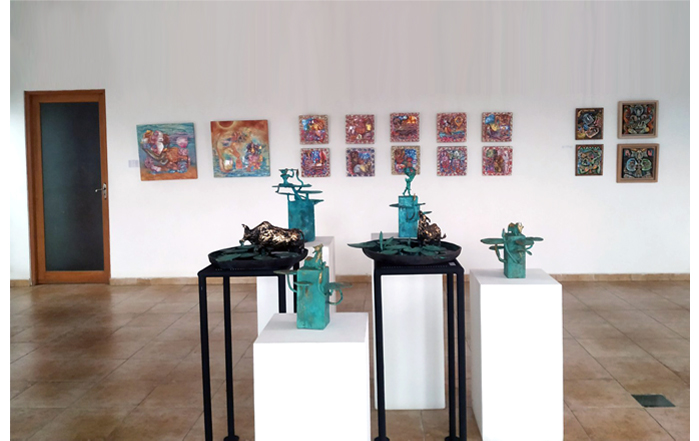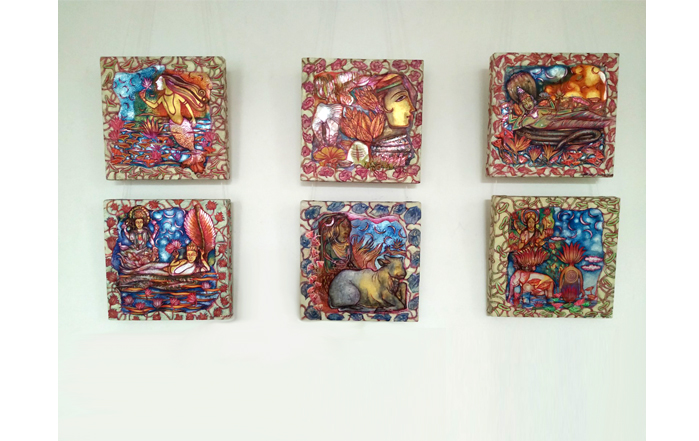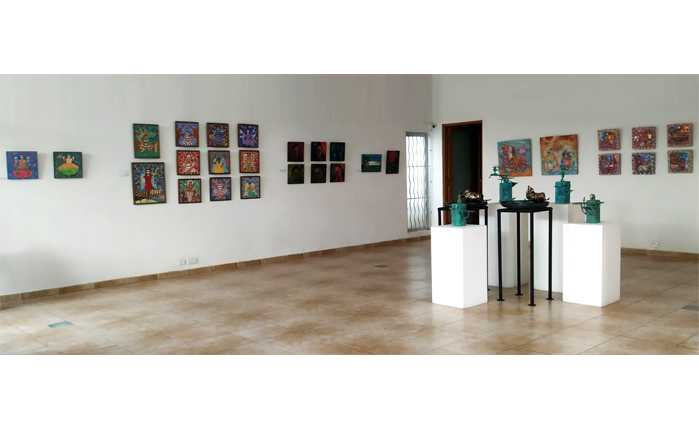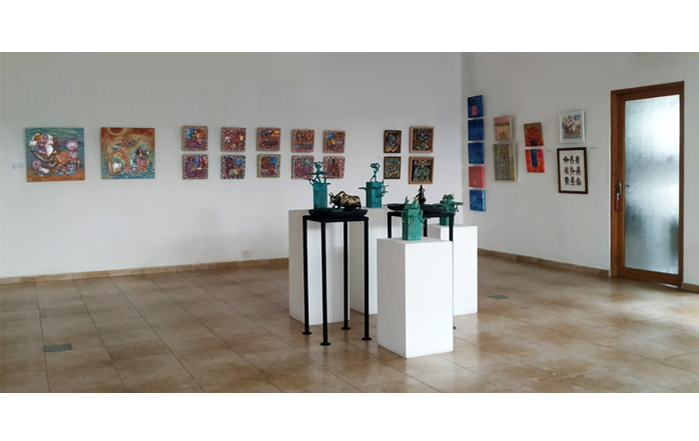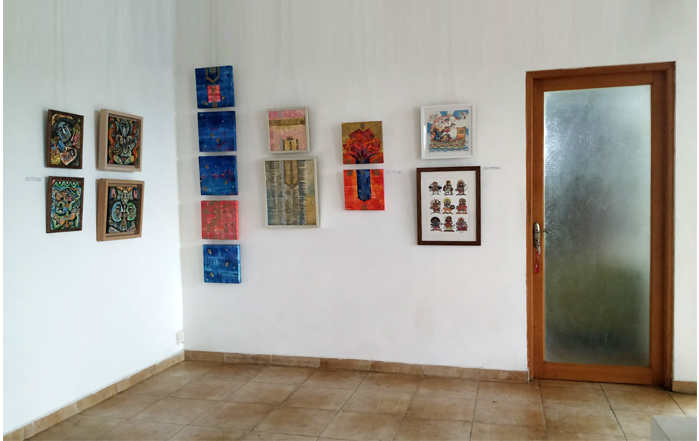The artists delved into the theme of identity as an experience born out of reverence for the Divine that manifested on the canvas as gods, goddesses or beings endowed with attributes that gave them an exalted status. The personal vocabulary offered a compelling insight into the creative trajectory of an artist and explicitly conveyed the imagery or invited our mind to inquire into the artwork to reveal its abstract presence.
“Who am I? How do I perceive myself? In what way does my experience drape my identity? What sets my behaviour, thought process and character apart from others? Does my ethnic heritage and religion play a role in shaping my view? Does my identity alter with my life’s experiences? How do these find root in my art?”
The central archetype of the collection was about communication. The artists worked to explore and express notions of identity based on their experiences to convey a myriad of thoughts that elucidated the sacred, the revered and the earthly.
In A.V.Ilango's art practice that spanned many decades, Lord Krishna or the bovine were recurrent themes in the artist's repertoire. Subjects such as these were internalized and deployed as powerful metaphors of the Divine. The artist acknowledged the bull as a symbol of virility, fertility and piety. It surfaced from the substratum of Ilango’s pastoral sensibility and found a presence in the artist’s canvas. Their powerful frame had left an indelible impression on him to fountain head his creativity. His childhood experience and memories rendered his familiarity with the bovine form into a linear flow. While the lyrical line was the basis of his pictorial structure, the linear rhythm constructed his form through the dynamics of positive and negative space.
Biswajit Balasubramanian, a cartoonist whose endearing characters layered with humour, populated his art. The Divine engaged in the drama of life were presented in contemporary parlance. He peeled away his experiences in the layers to reveal in its simplicity the essence of his protagonists.
K. Muralidharan realized the importance of creating work that reflected his experiences taken from his own soil. To him a goddess was merely symbolic of the power of women and therefore also fit for deification. He created a landscape with characters surrounding the central figure as actors in a supportive role that embellished the core performer.
Drawing on the imagery and oral traditions of the epic stories, fables and Hindu mythology, M. Senathipathi developed his highly impressionable and distinct style built on fluid lyrical line and colour and dense pattern. Lord Ganesha or Krishna though divine in nature echoed human sentiments in an emotional vernacular. The dynamics of all relationships was never static and changed as life’s experiences grew.
Meditation as a form of finding one’s inner truth was a process that Manisha Raju found application in her art. The figures in her canvases had a heightened awareness of the Self and rested in a tranquil space. A work that spoke through its silence and silence was a value to be imbed and practiced.
In Nirmala Biluka’s work, the feminine forces of nature regarded as sacred and spiritual found expression as local village deities. The artist was inspired by such folk lore and the women draped in modernity straddled two worlds, that of the present and the Divine.
A language that combined script and imagery was R.Sundararaju’s unique signature style. The artist leaned towards his native surroundings to glorify the common woman, an earthy being with divine attributes. Seeking inspiration from the world around him and living amidst rural people his quality of life was simple and uncomplicated without modern trappings as were his subjects.
For Santhosh Kotagiri, the imagery that appeared first in deep sleep had a surreal feel that was true to his self and defined his character. The gods and goddesses that were projections of his nocturnal mindscape floated as celestial beings amid flora that transported them to another realm of reality. A fine line between the two, the Self and the Divine gave way to a metamorphosis of the oneness that was the ultimate truth.
For Shalini Biswajit, life’s experiences were articulated in visual terms and were bathed in colour and metaphors that traced her spiritual journey as a seeker of the ultimate truth of the Self. That every person was divine was elucidated in the scriptures. This abstract thought found representation in her art. Be it imbibing the qualities of the Lotus that symbolized spiritual enlightenment and rebirth or the strokes of colour applied on the canvas that traced her steps to self inquiry the motive was clear - To meditate on the Self to discover the Self.
Finding her roots in Kerala, Thejomaye Menon was deeply influenced by Kannappan Nayanar and tales from Shiva Purana, the rhythm of dance and the universal truth behind all creation. Be it the Creator manifested as Lord Vishnu or Lord Shiva the artist unravelled the imagery of the deity using symbolic references.
P.Elanchezhiyan’s lyrical rendering of the Divine and the Bovine have a reverential simplicity that humbly translates as grace, devotion and piety. Drawing inspiration from childhood the aesthetics offered by bronze remains his foremost priority seamlessly combining the universality of nature and culture.
